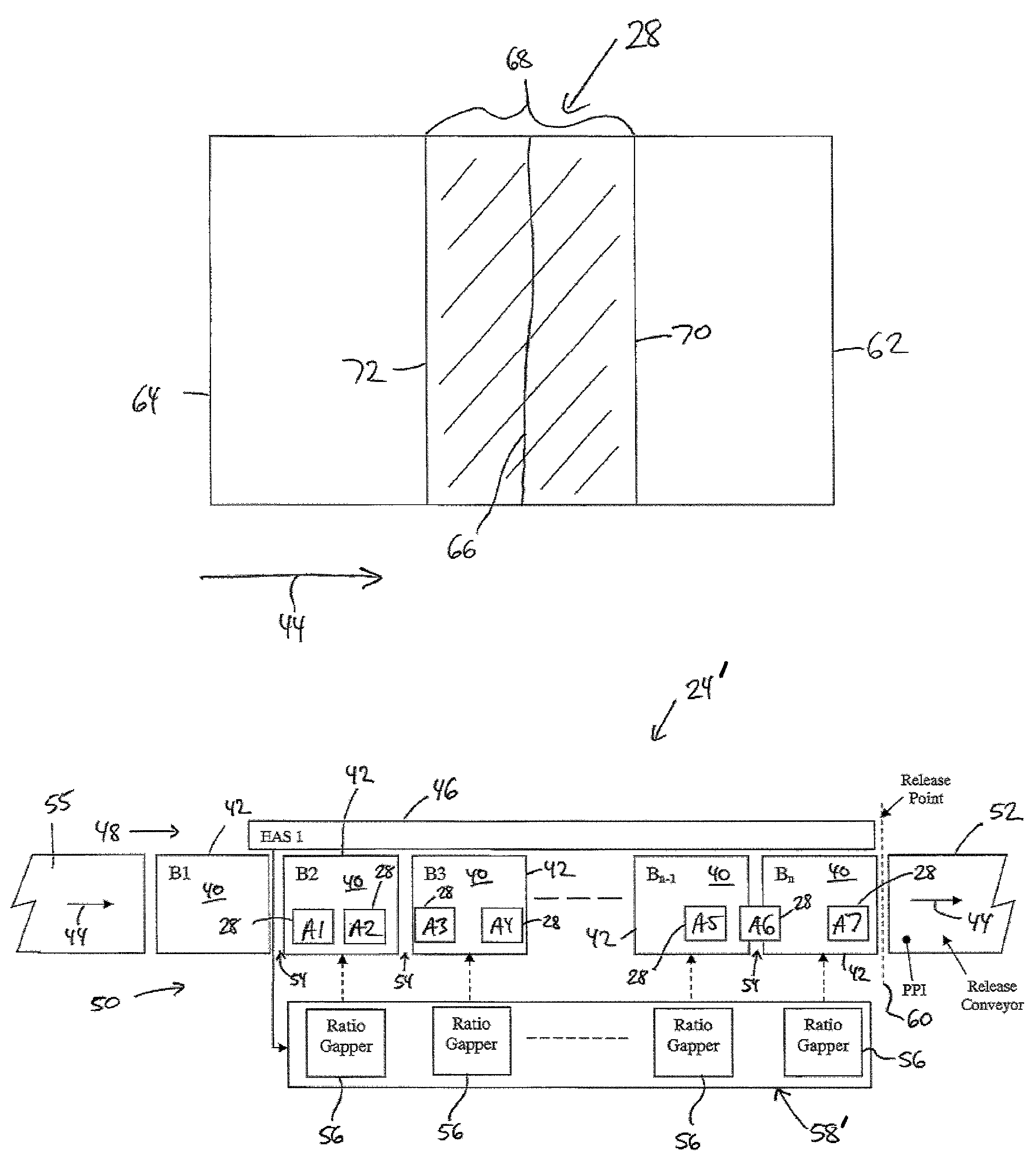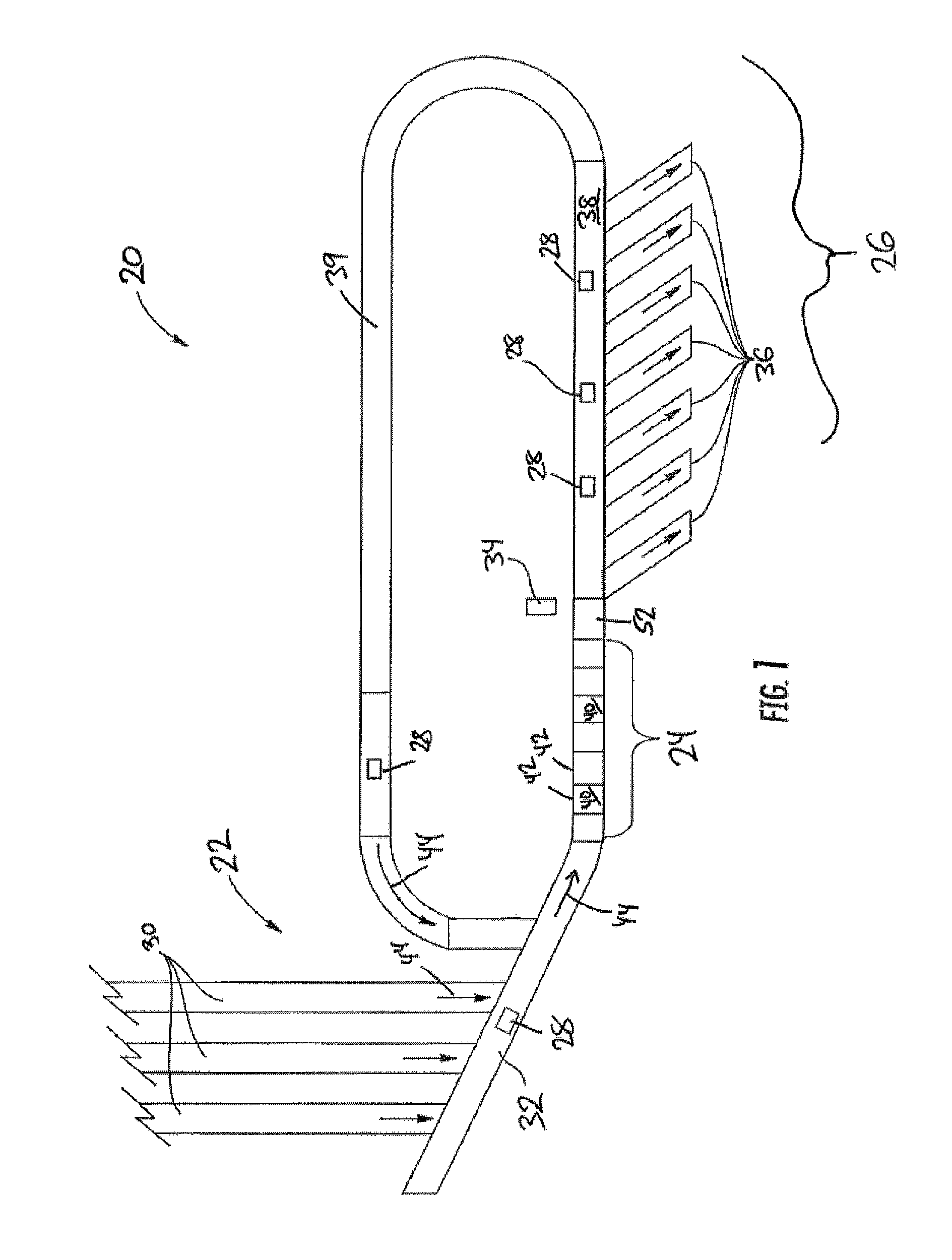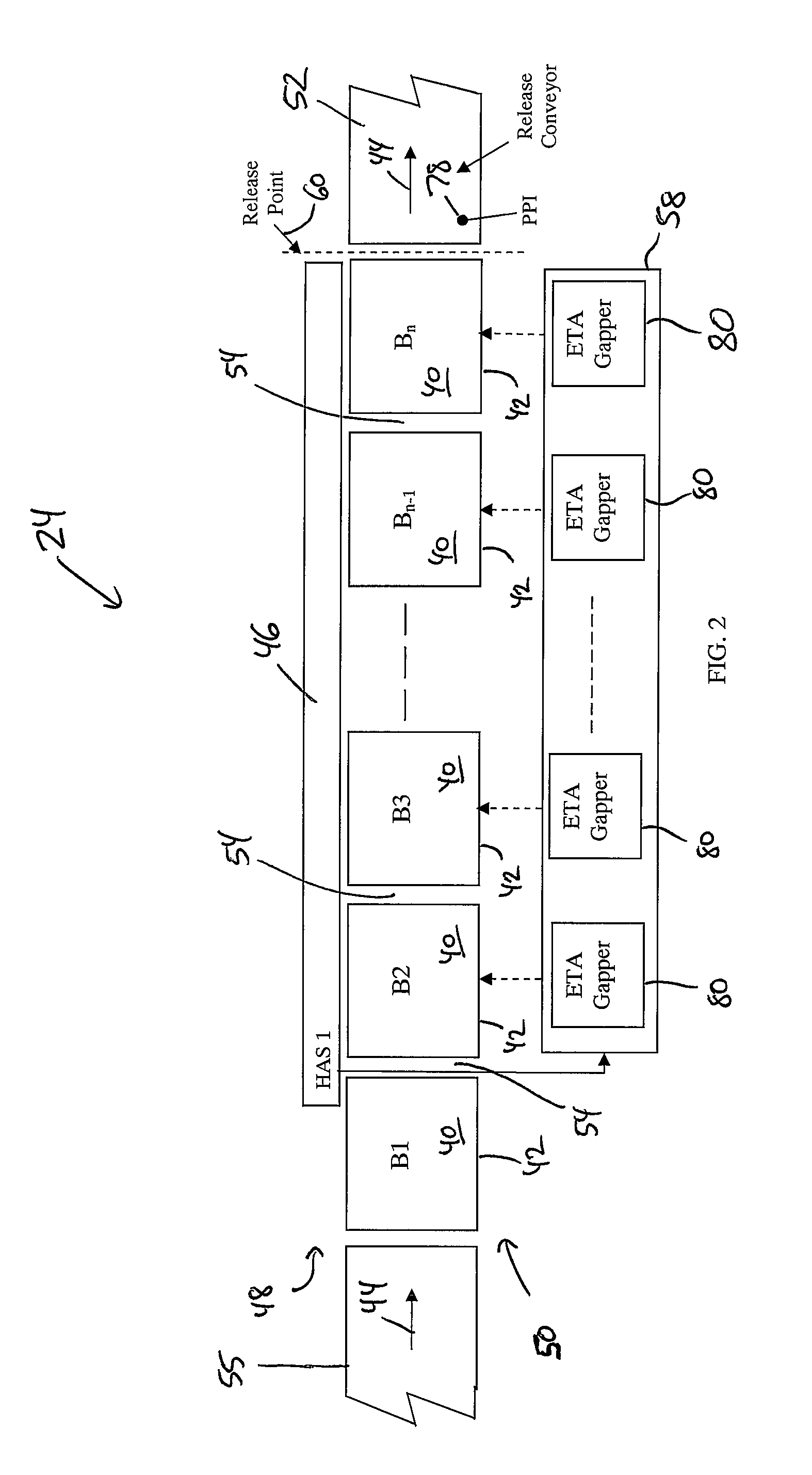Conveyor induct
a conveyor system and induction section technology, applied in the direction of conveyor control devices, conveyor parts, transportation and packaging, etc., can solve the problem of reducing the throughput of the conveying system
- Summary
- Abstract
- Description
- Claims
- Application Information
AI Technical Summary
Benefits of technology
Problems solved by technology
Method used
Image
Examples
Embodiment Construction
[0021]A conveying system 20 according to one embodiment is depicted in plan view in FIG. 1. The layout of conveying system 20 shown in FIG. 1 is an arbitrary layout that has been selected for purposes of further understanding the various embodiments. The layout of an actual conveying system will vary from that shown in FIG. 1 depending upon the warehouse or other facility in which the system 20 is incorporated. In general, conveying system 20 is adapted to convey articles 28, such as packages, retail products, etc. using a plurality of conveyors from a first location or set of locations to a destination or set of destinations. Conveying system 20 may be used in a product distribution center, a warehouse, a factory, a receiving and sortation facility, or other types of buildings or structures. The types of articles 28 that may be transported by conveying system 20 can vary widely, and it will be understood by those skilled in the art that the sizes and rectangular shapes of the artic...
PUM
 Login to View More
Login to View More Abstract
Description
Claims
Application Information
 Login to View More
Login to View More - R&D
- Intellectual Property
- Life Sciences
- Materials
- Tech Scout
- Unparalleled Data Quality
- Higher Quality Content
- 60% Fewer Hallucinations
Browse by: Latest US Patents, China's latest patents, Technical Efficacy Thesaurus, Application Domain, Technology Topic, Popular Technical Reports.
© 2025 PatSnap. All rights reserved.Legal|Privacy policy|Modern Slavery Act Transparency Statement|Sitemap|About US| Contact US: help@patsnap.com



